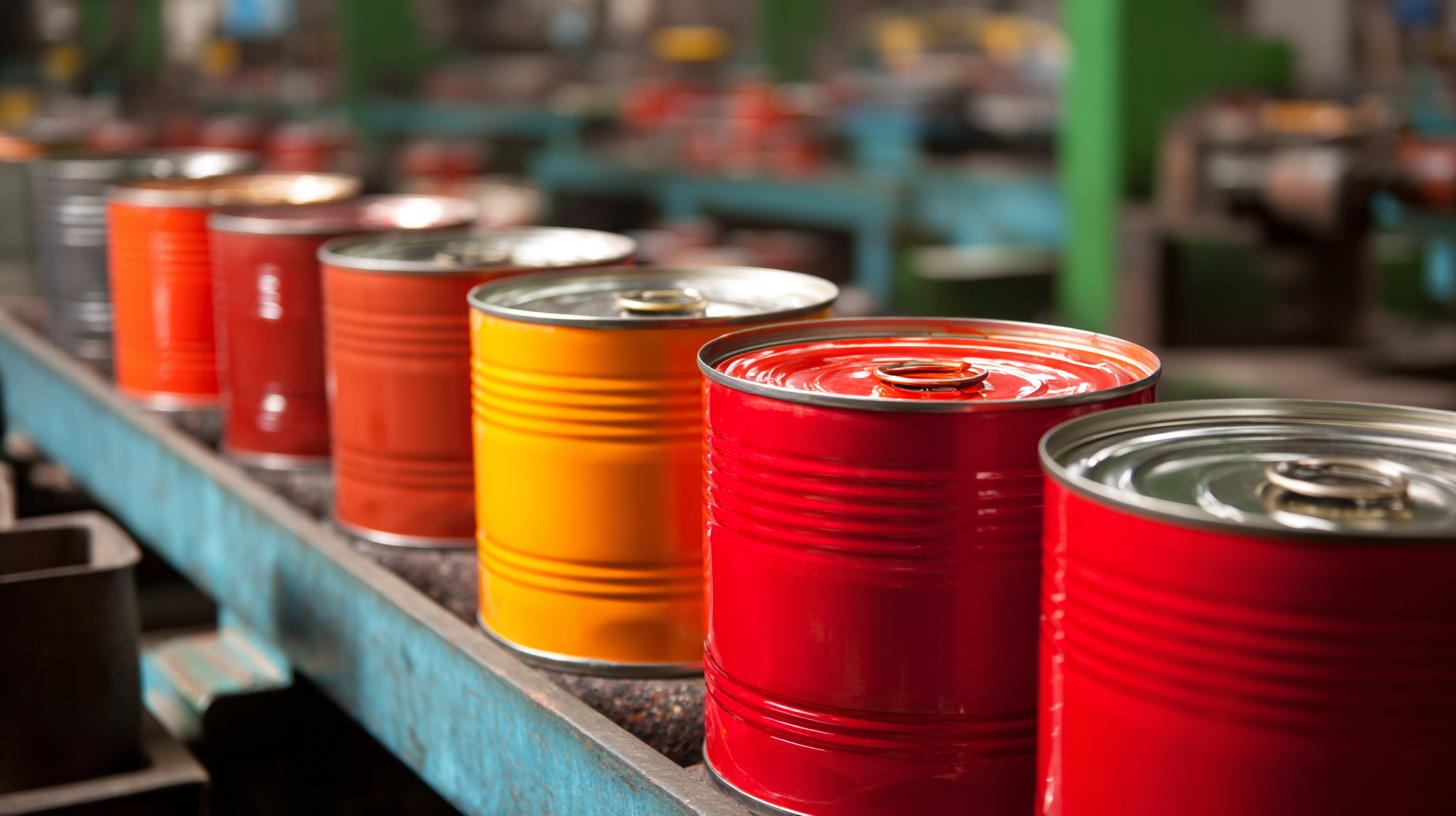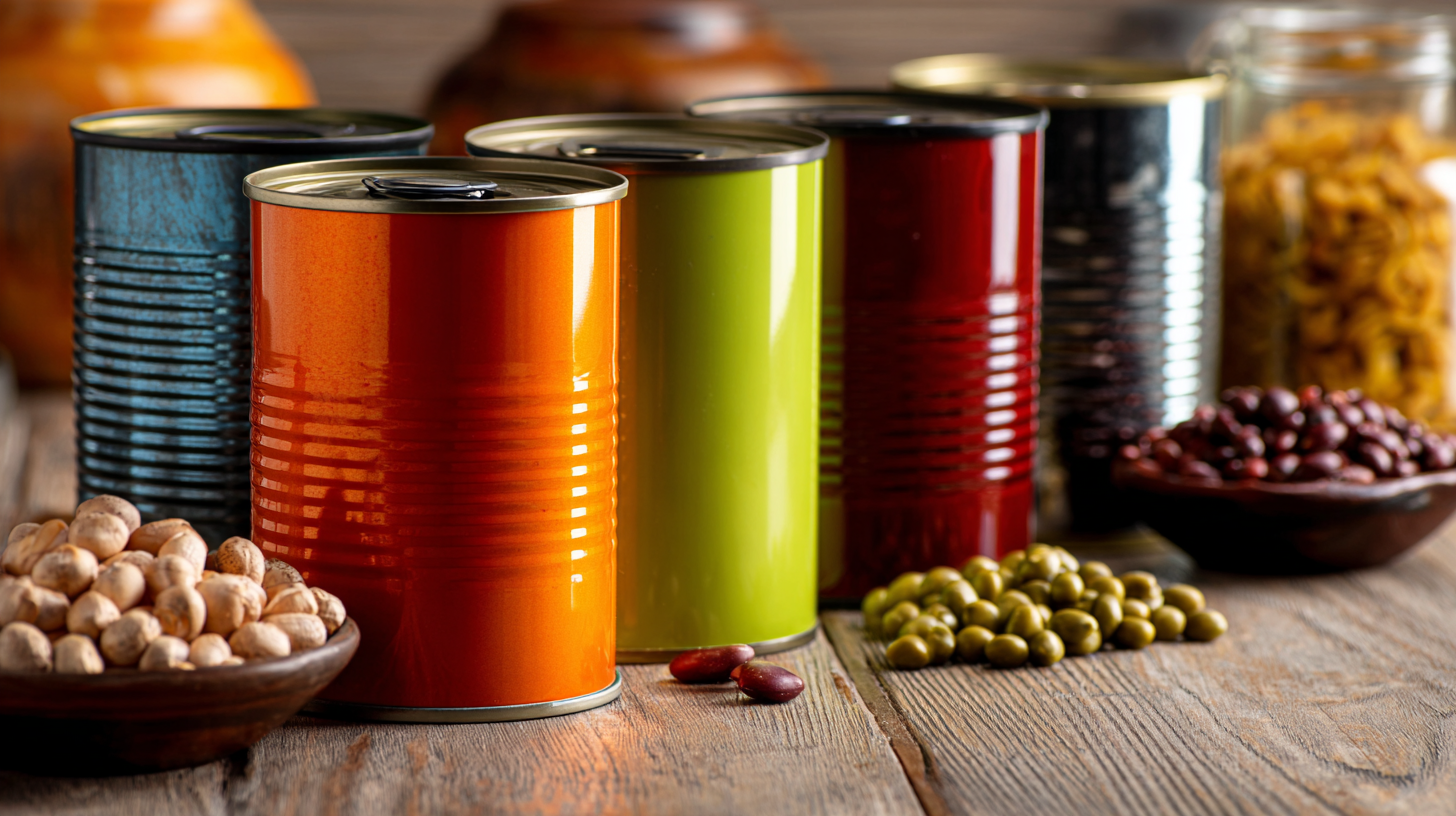 +8618680445103
+8618680445103
Free Standard Samples can be provided for you to check the quality.
Leave Your Message
 In an ever-evolving market, sourcing premium quality food cans from top manufacturing facilities in China is crucial for businesses aiming to provide superior products to their customers. The shelves of grocery stores are lined with numerous options, making it imperative to identify reliable suppliers who adhere to high manufacturing standards. This blog will guide you through the essential steps to find the best food cans suppliers, ensuring that you choose partners who prioritize quality, safety, and innovation.
In an ever-evolving market, sourcing premium quality food cans from top manufacturing facilities in China is crucial for businesses aiming to provide superior products to their customers. The shelves of grocery stores are lined with numerous options, making it imperative to identify reliable suppliers who adhere to high manufacturing standards. This blog will guide you through the essential steps to find the best food cans suppliers, ensuring that you choose partners who prioritize quality, safety, and innovation.
We’ll provide a comprehensive checklist to streamline your search, making it easier to evaluate potential manufacturers effectively. By following these guidelines, you can secure a competitive advantage in the food industry and offer your customers the finest products available.
 The food can manufacturing industry in China has undergone significant transformation over the past few decades, evolving from basic production methods to advanced technological processes. In the early 2000s, the sector primarily relied on manual labor and simple machinery, which resulted in lower efficiency and quality control issues. According to recent reports from Market Research Future, the food can market in China is expected to surpass USD 10 billion by 2025, reflecting a compound annual growth rate (CAGR) of over 5%. This growth can be attributed to increased domestic demand for canned food and improvements in manufacturing technologies.
The food can manufacturing industry in China has undergone significant transformation over the past few decades, evolving from basic production methods to advanced technological processes. In the early 2000s, the sector primarily relied on manual labor and simple machinery, which resulted in lower efficiency and quality control issues. According to recent reports from Market Research Future, the food can market in China is expected to surpass USD 10 billion by 2025, reflecting a compound annual growth rate (CAGR) of over 5%. This growth can be attributed to increased domestic demand for canned food and improvements in manufacturing technologies.
One of the key factors driving this evolution is the adoption of automated production lines and enhanced quality management systems. Studies indicate that more than 60% of food can manufacturers in China have integrated robotic automation to streamline their processes, leading to improved precision and reduced production times. Moreover, innovations such as environmentally friendly can linings and sustainable sourcing of materials have positioned Chinese manufacturers as industry leaders. As the sector continues to advance, it is critical for manufacturers to not only focus on efficiency but also on sustainability to meet the growing consumer demand for environmentally responsible products.
In the realm of food safety and quality, the standards upheld by top food canning facilities in China are critical to global supply chains. According to the Food Science Institute, approximately 35% of canned food products consumed worldwide are imported from China, underscoring the importance of stringent quality regulations. Facilities in this vibrant sector adhere to internationally recognized standards such as ISO 22000 and HACCP, ensuring that all processes—from sourcing ingredients to packaging—meet high-quality benchmarks.
Recent reports highlight that China has invested over $3 billion in modernizing its food processing infrastructure, greatly enhancing the capabilities of its canning facilities. These facilities utilize advanced technology for quality control, including automated inspection systems and real-time monitoring, which help to verify every batch's safety and freshness. With the rise of consumer awareness regarding food safety, many manufacturers are also seeking certifications from organizations like the British Retail Consortium (BRC), aiming to bolster their global competitiveness. As a result, consumers can trust that the premium quality food cans sourced from these top facilities not only meet but often exceed international safety standards.
The premium food can market is witnessing a significant surge, driven by rising consumer preferences for quality and convenience. As the global market size for canned fruit is projected to grow from $12.27 billion in 2024 to $16.23 billion by 2032, with a compound annual growth rate (CAGR) of 3.60%, it’s essential for manufacturers to adapt to these evolving demands. This shift is reflected across various segments, including canned seafood and vegetables, highlighting the importance of premium offerings.
Tip: When exploring premium food cans, consider sourcing from companies with top-tier manufacturing facilities to ensure quality and safety standards. Prioritize brands that emphasize sustainable practices, as consumers increasingly favor products that contribute to environmental conservation.
In addition to quality, market trends indicate a growing interest in diverse flavors and innovative packaging designs. For instance, the tinplate packaging sector is expected to grow from $1.76 billion in 2025 to $2.65 billion by 2032, showcasing the rising demand for aesthetically pleasing and functional packaging solutions.
Tip: Stay informed about emerging trends within the canned food industry by attending trade shows or subscribing to industry newsletters. This proactive approach can help manufacturers stay ahead of market changes and consumer preferences.

The food can manufacturing industry in China is increasingly adopting sustainable practices, driven by the urgent need to address environmental concerns and improve resource management. Recent studies highlight the optimization of food production structures as a key strategy to enhance water sustainability while ensuring food security. By integrating these practices, manufacturers are not only meeting the growing domestic and global demand for high-quality food products but also minimizing their ecological footprint.
Additionally, the rise of organic food production among urban botanists signifies a broader shift towards environmentally friendly agricultural methods. This movement aligns with China's commitment to sustainable food consumption, as consumers become more aware of the implications of their dietary choices on climate change. The transformation from traditional smallholder farming to sustainable agricultural practices is reshaping the landscape of food production in the country, paving the way for a more responsible and resilient industry that prioritizes both quality and ecological health.
The popularity of Chinese food cans has surged globally, driven by a combination of quality, variety, and affordability. As consumers become increasingly discerning about the food products they choose, Chinese manufacturers have stepped up to provide options that not only meet but exceed international standards. This appeal is primarily influenced by the convenience and long shelf life of canned foods, making them a staple for busy households around the world.
To harness this trend, companies should focus on transparency in sourcing and manufacturing processes. Customers today are more inclined to support brands that actively communicate their commitment to quality and sustainability. Additionally, marketing strategies should highlight the unique flavors and recipes that distinguish Chinese canned foods from traditional offerings, tapping into the growing appetite for diverse culinary experiences.
Tips for maximizing the appeal of canned food products include emphasizing health benefits on labels and engaging consumers through social media platforms. Creating recipe ideas and cooking tips that incorporate canned items can also help demystify their use and inspire creative meal planning at home. Engaging with consumers through food challenges or sharing user-generated content can further enhance brand loyalty and interest in these quality products.
| Product Category | Consumer Preference (%) | Key Features | Average Price (USD) |
|---|---|---|---|
| Vegetables | 30% | Organic, No preservatives | 1.50 |
| Fruits | 25% | Natural, Sweetened with fruit juice | 2.00 |
| Fish | 20% | Wild-caught, High Omega-3 | 3.50 |
| Soups | 15% | Ready-to-eat, Hearty flavors | 2.50 |
| Meats | 10% | Slow-cooked, Tender cuts | 4.00 |
